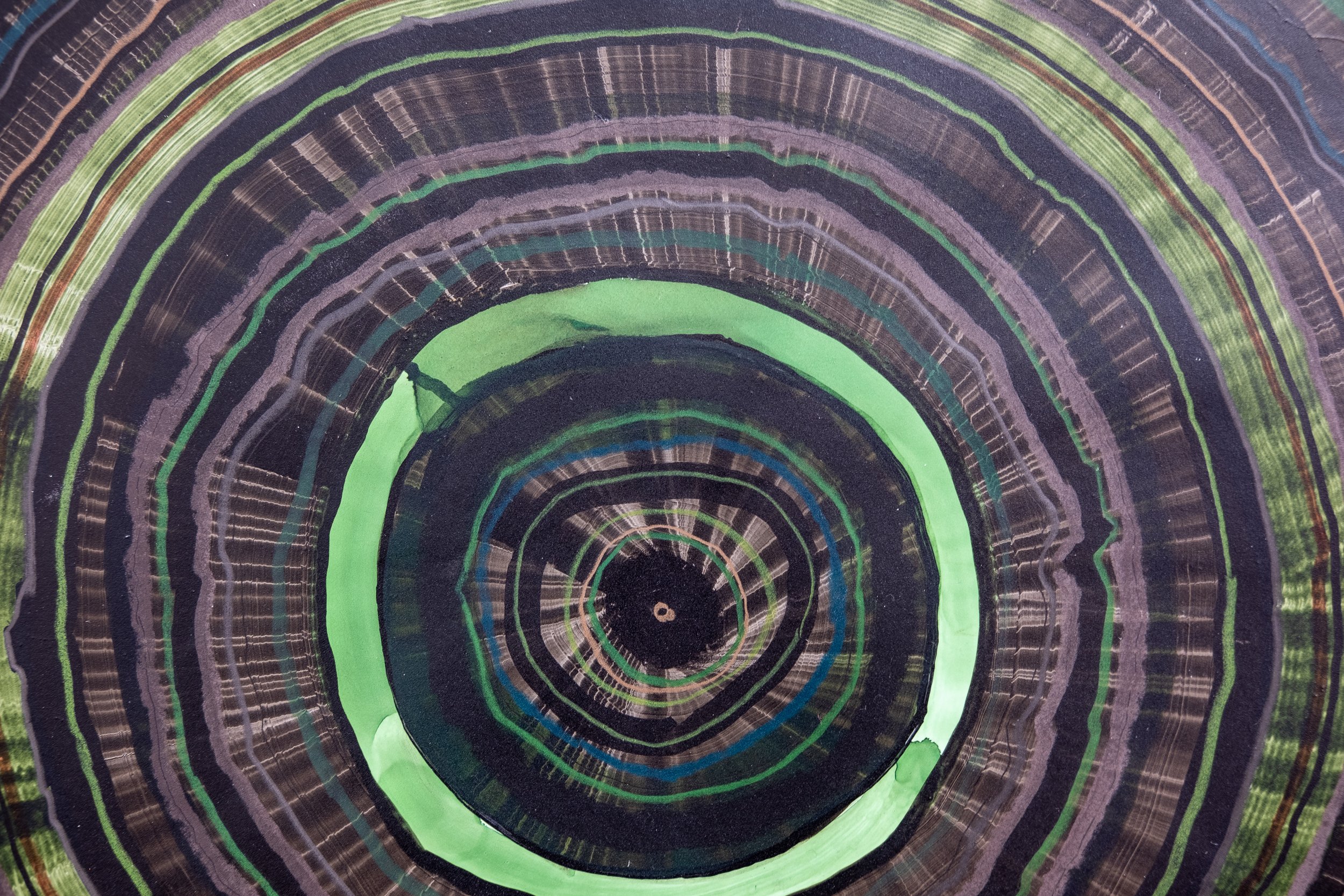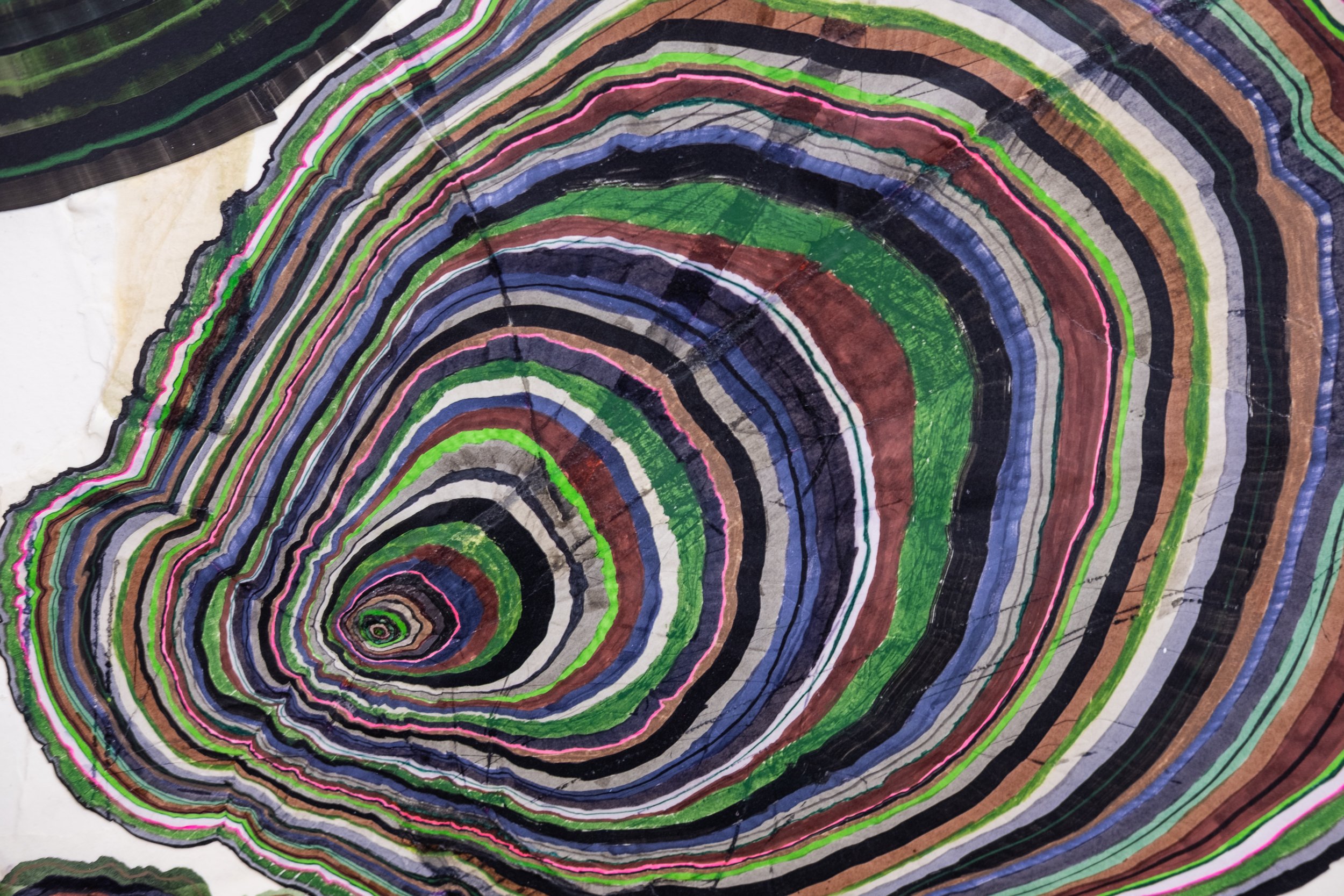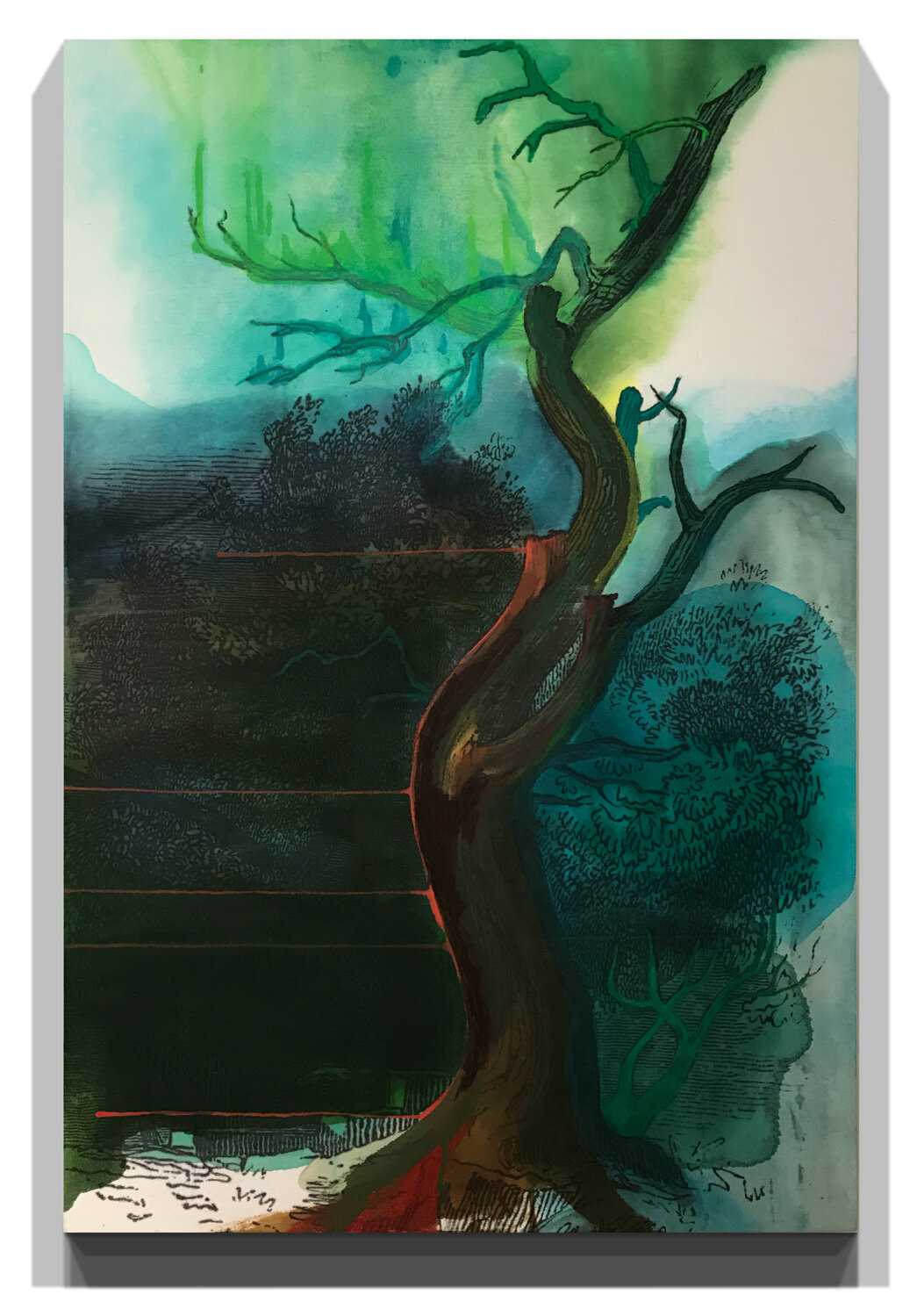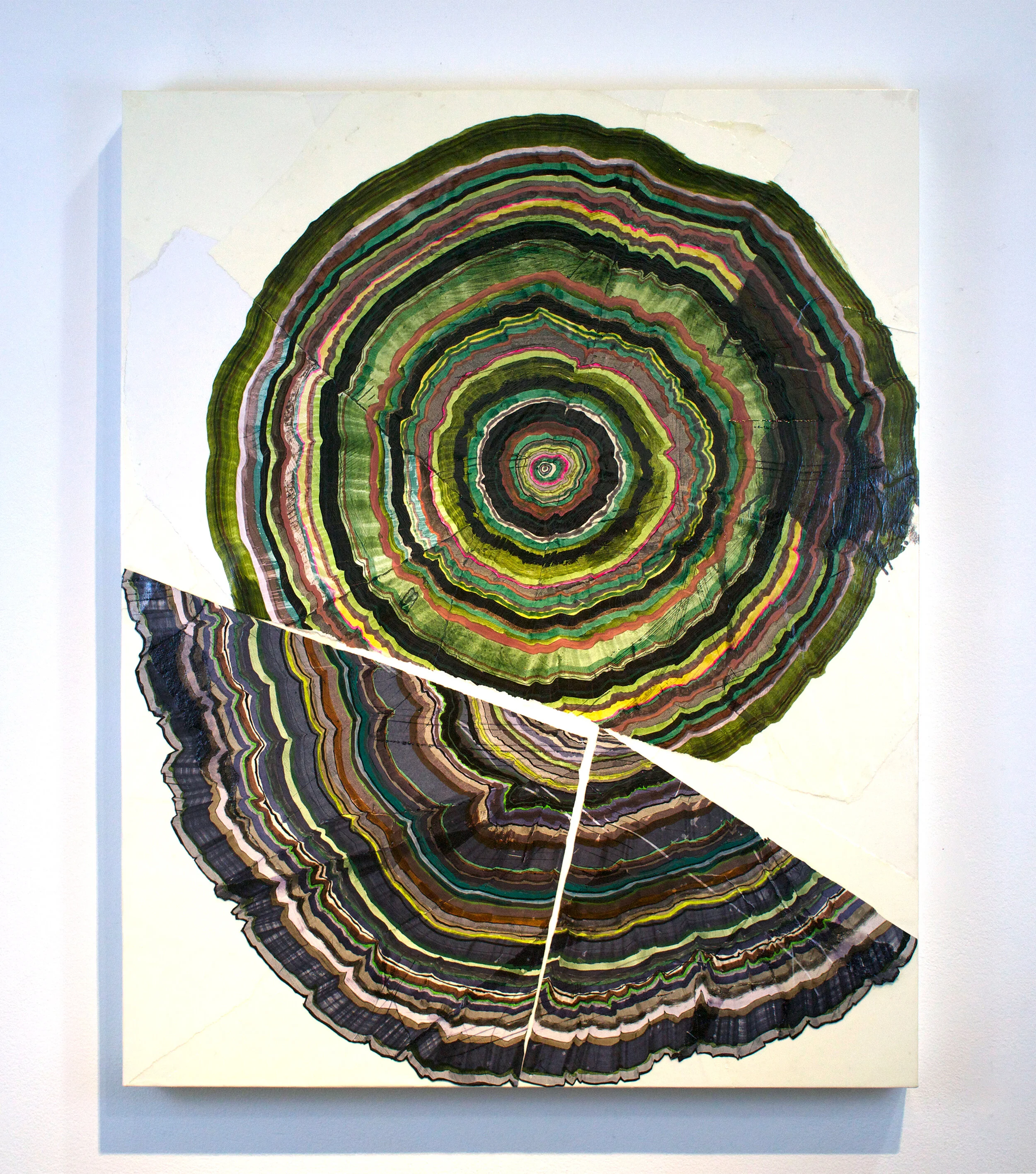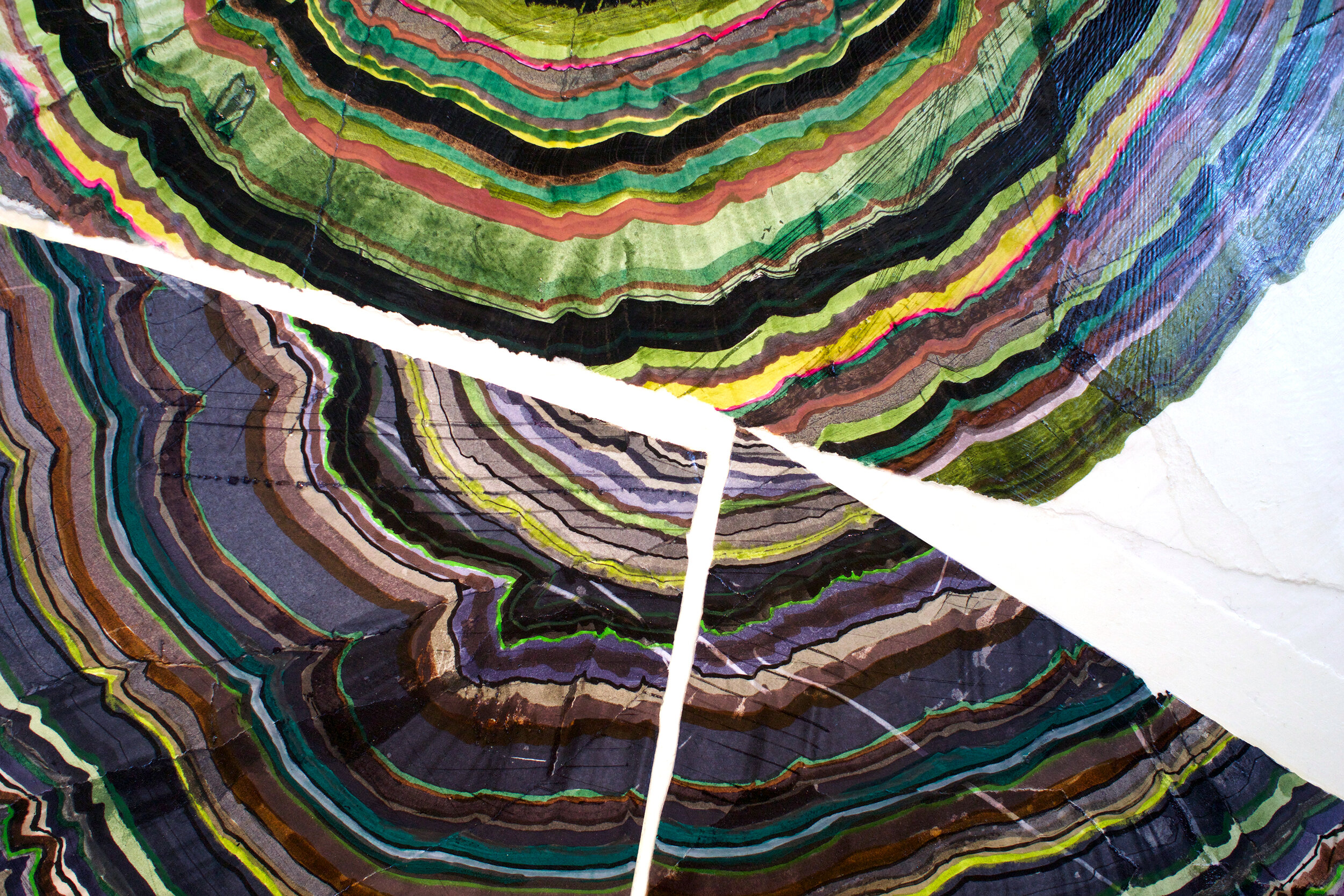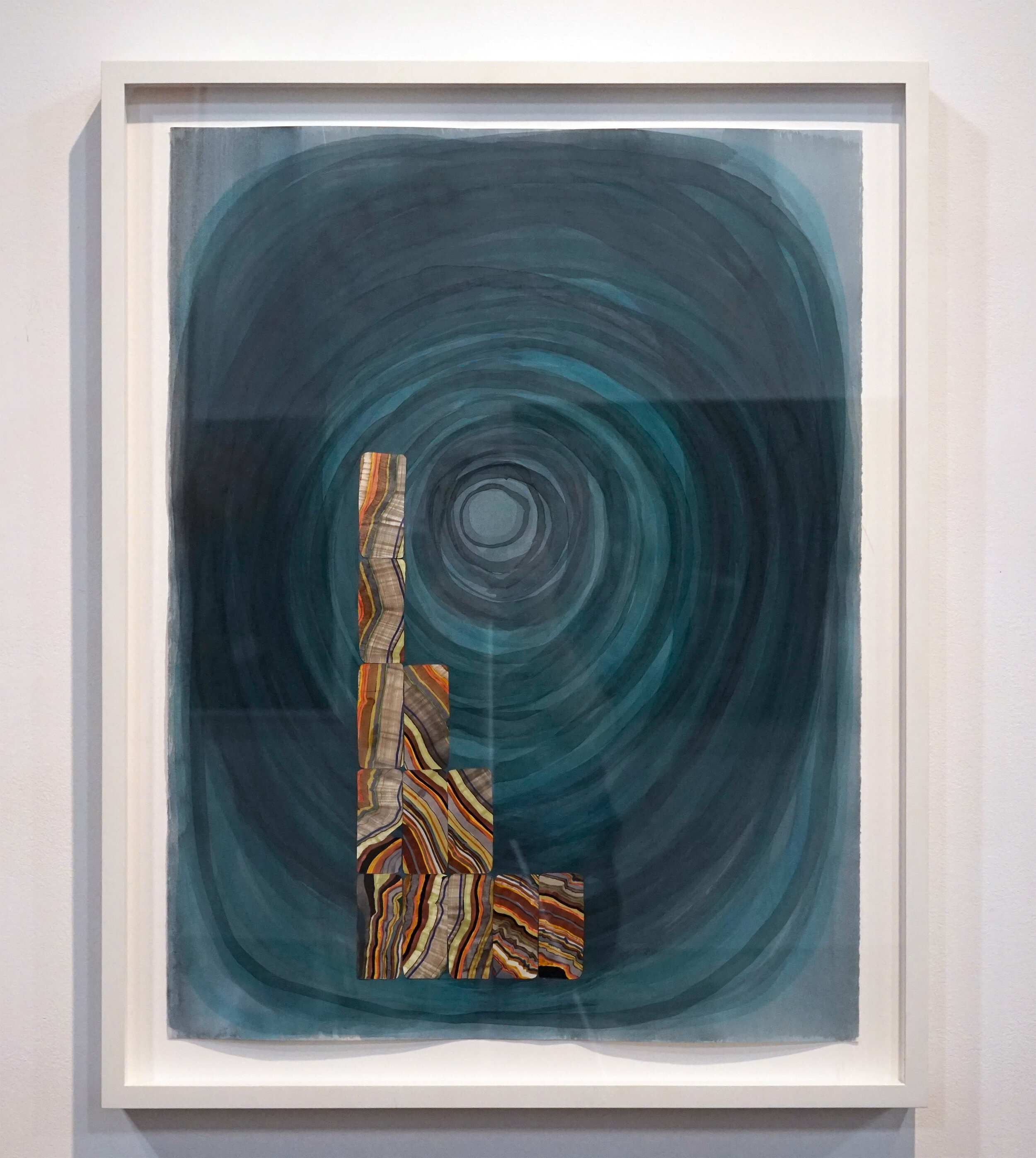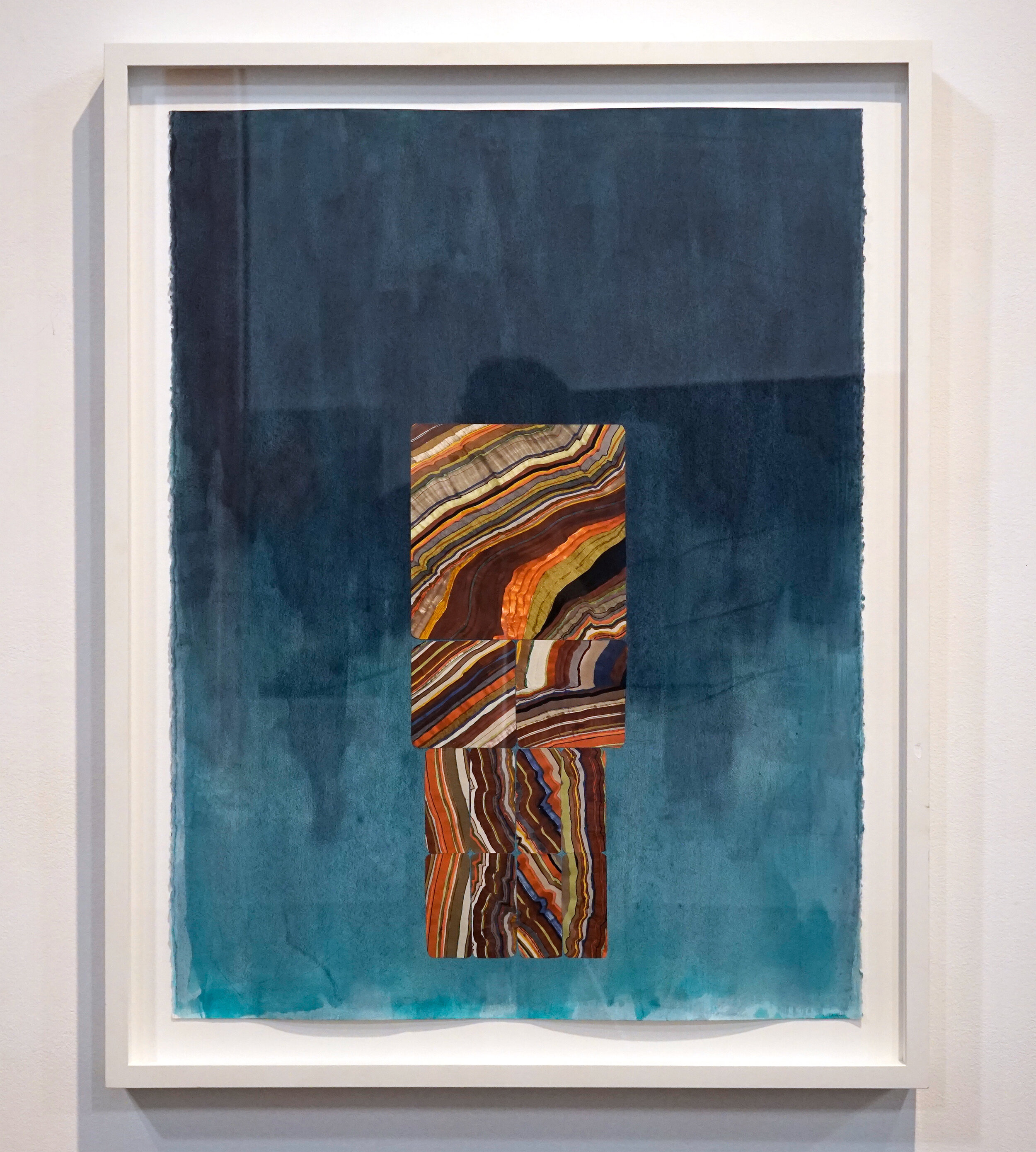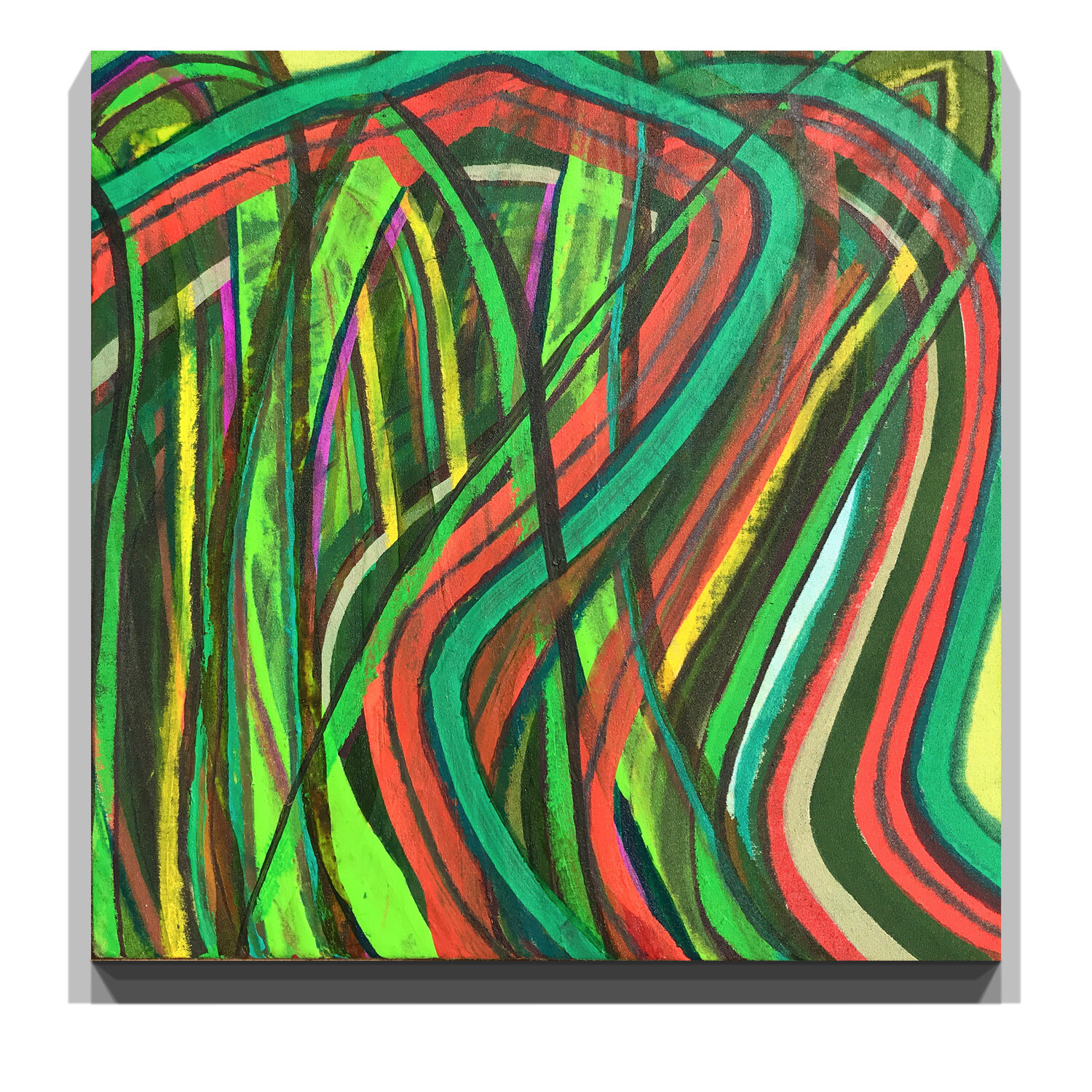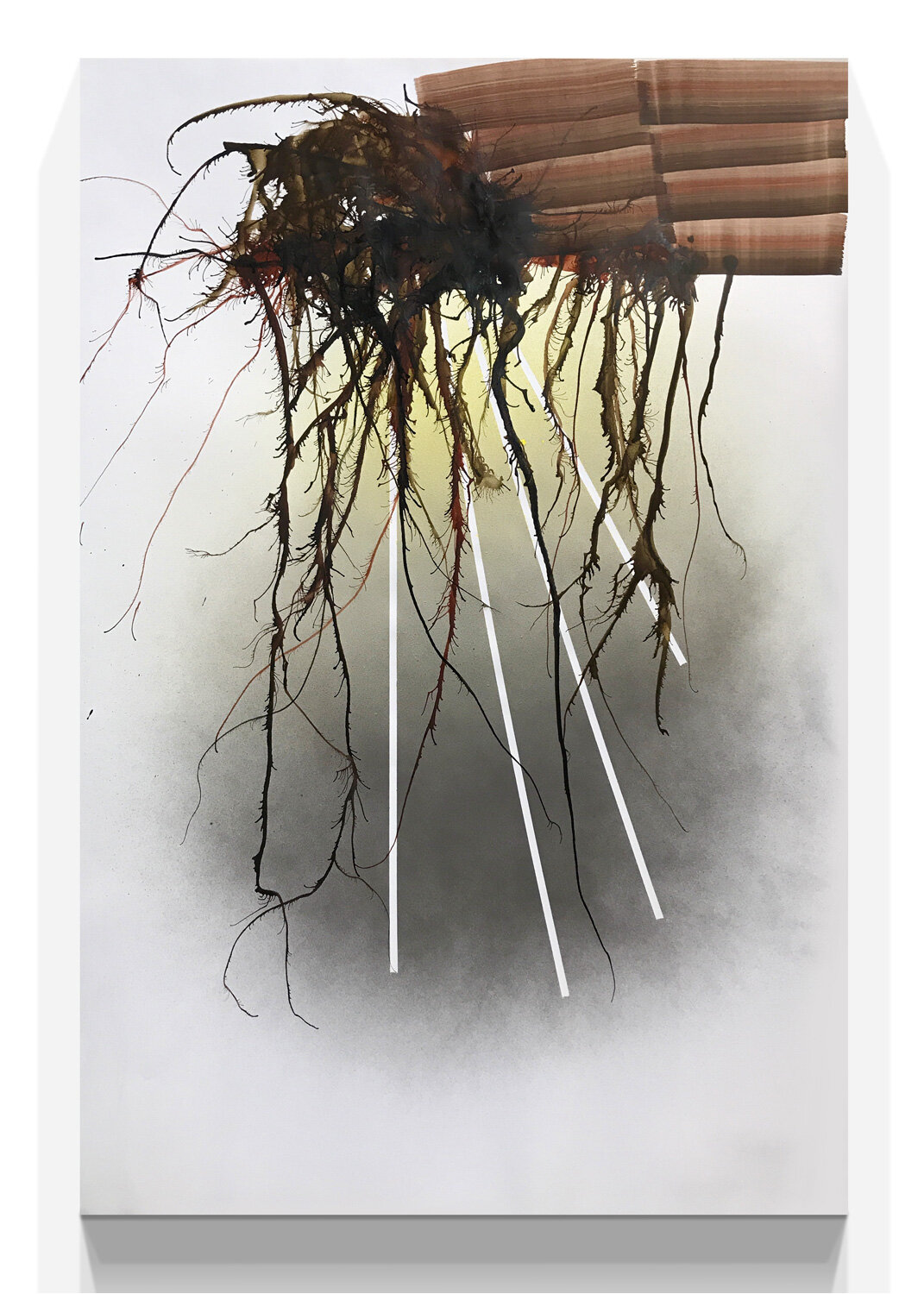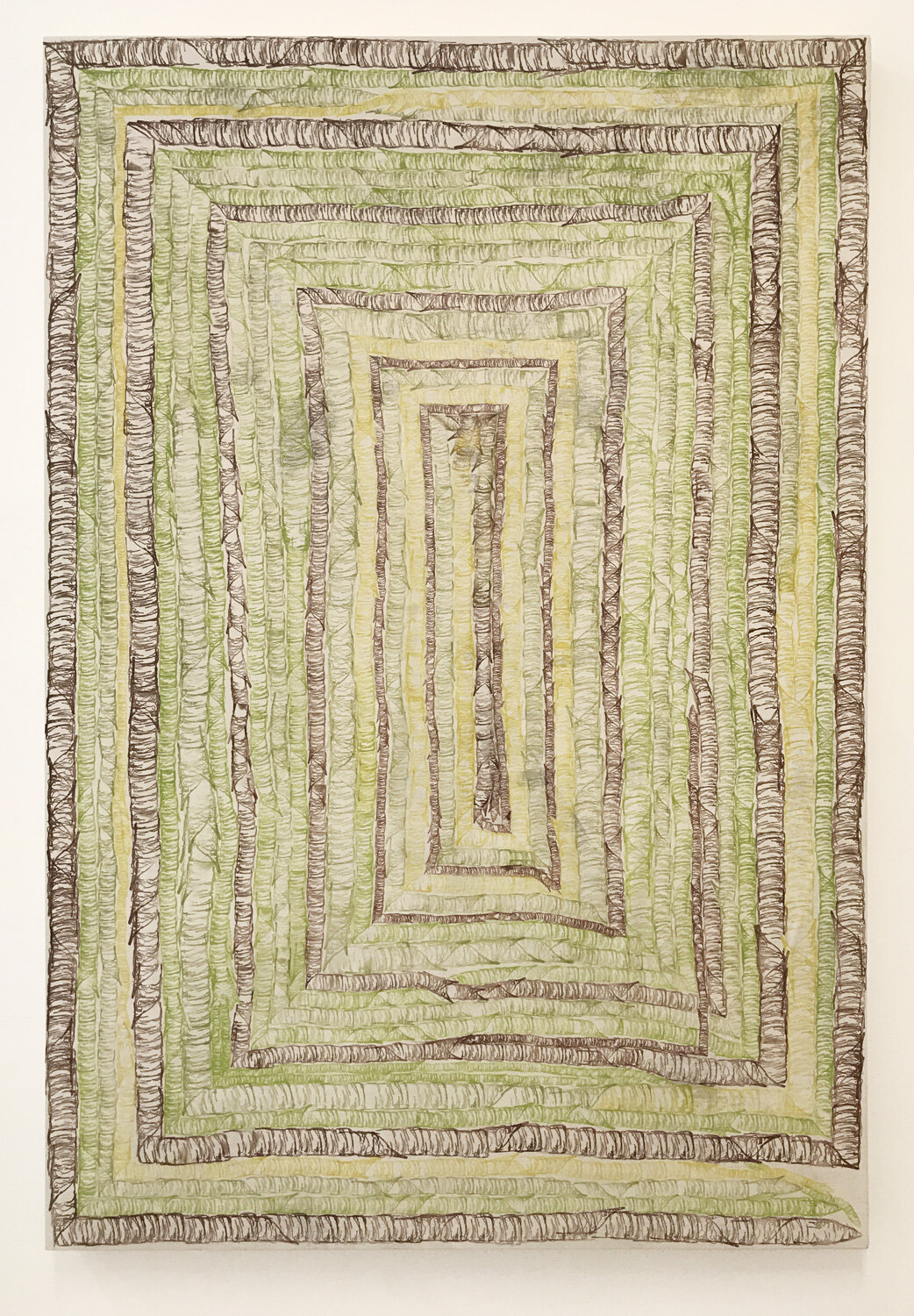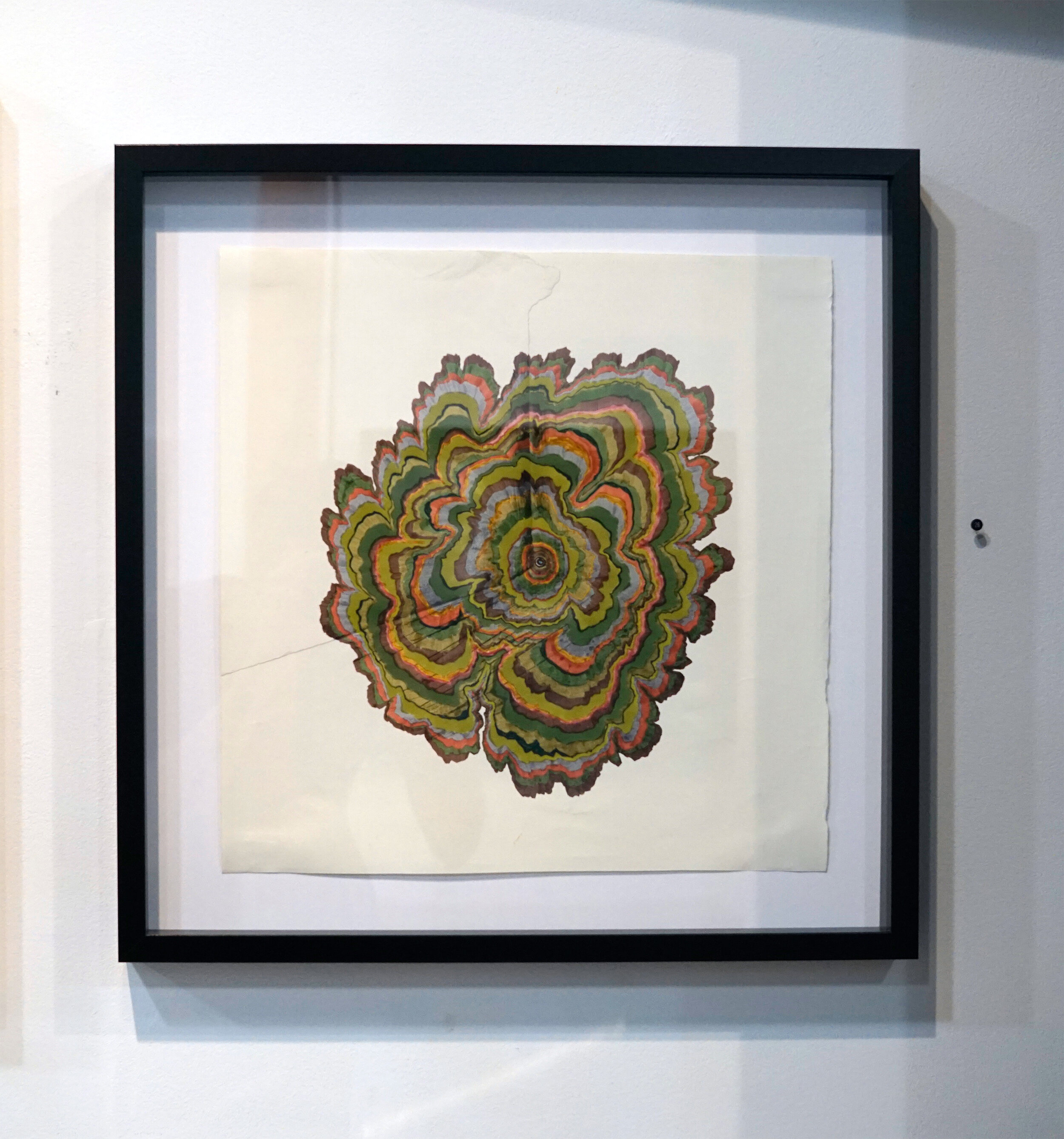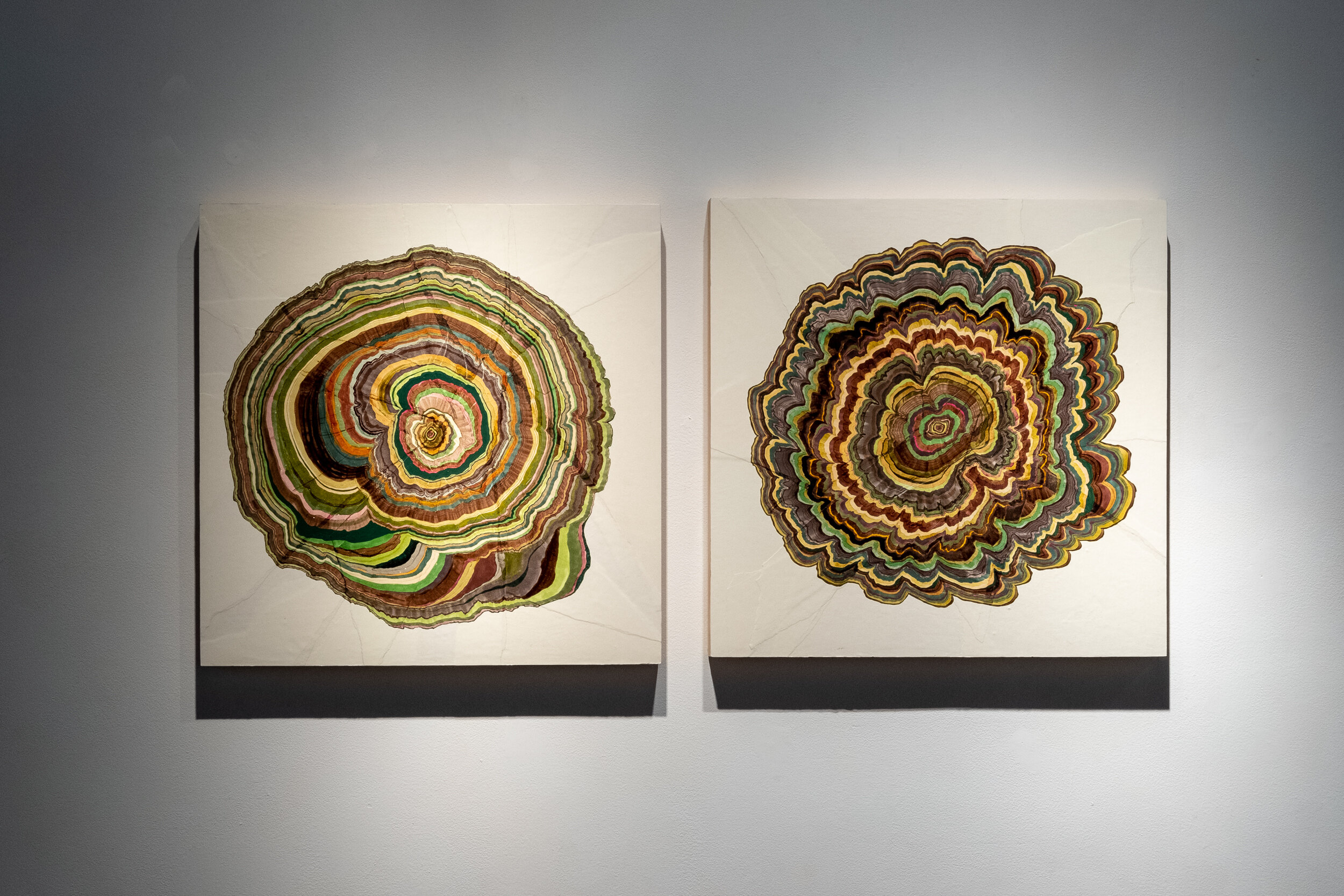Nature plays a pivotal role in the work you create. What is your affinity toward your explorations of roots and trees and what are your first memories of appreciating the solace that comes with being in nature?
Roots and branches are anatomical parts of trees and plants, but they are also concepts that describe functions of organized systems, whether speaking of nature or in cultural or societal terms. Finding these kinds of connections and throughlines of thought has opened up a seemingly endless subject matter in my artwork.
These ideas began to click when we moved to Los Angeles right after 9/11—my friends all in grad school and me wondering what on earth my artwork was going to be about. Stoned on my back patio, surrounded by sun, hot pink bougainvillea, and California fan palms; struggling through Deleuze & Guattari’s writing about rhizomes, I began to hold and sustain a real sense of wonder about my strange new surroundings.
I used to roam around outdoors in the same sense of wonder growing up in Michigan. Adventuring, I’d call it, and once beyond our yard, I really was out in the countryside. I’d wade through the creeks, tramp through brush and forest. I’ve gone back to this in artist residencies in Joshua Tree National Park, the Hambidge Center in north Georgia, and will do more this year at the Blue Heron Nature Preserve in Atlanta. It’s like an up-close, performative research of my surroundings—crawling in the ivy and climbing trees and documenting the whole thing on video.
Your palette tends to be a fall and winter palette with muted tones and color combinations. What informs your color choices? Do you see a series in the future exploring spring and summer palettes?
It’s true, I absorb the colors that surround me out in the world. My first paintings of tree branches while I lived in Chicago in the ’90s had no leaves, my color palate was mostly grays. When I lived in Los Angeles in the ’00s, I focused on agaves, aloes, and other succulents. They were bright greens and yellows, often hot psychedelic colors. My color palate changed again in Atlanta to a deeper green and browns. I used more black & green in my recent Forest series, inspired by a moss-covered stack of old logs. Sometimes my colors come from a desire to experiment, like the blue-on-brown Tree Ring pieces from 2019, or current group of works in progress—mashups of Victorian botanical engravings with bright Morris Louis-like washes.
You've garnered a lot of success and recognition for your work from museum exhibitions to traveling shows, corporate and private collections to artist residencies abroad. What drives you and what does it take to get to where you are in your career?
What drives me is probably no different than what drives a kid to have their drawings hung up on the family refrigerator. I have ambition, but it’s tempered by the gratitude I have for those that have helped me along the way.
In the 20+ years since I’ve graduated from art school, I’ve been able to develop an attitude, through many successes and failures, of allowing my creative urge to just plow forward. It’s an instinct I’ve had to consciously grow—unlearning my creative inhibitions. Part what it takes is found in the Boy Scout motto: Be Prepared. If I’m prepared with the skills I’ve learned, if I’ve invested in my tools, and have created space and time to operate, I can engage with the creative flow.
There’s an incredible amount of hard work that comes into developing and maintaining my art career: menial tasks, dead ends, backsliding, trials-and-errors, risk-taking, throwing money down the drain. But these are all opportunities for learning and improving, and they make the successes all the sweeter. What does it take? All this plus a lot of luck.
What kind of music do you listen to when creating? What factors determine each series and body of work?
I listen to many different genres of music, and will usually play a few albums to death before slowly picking up something new. Right now I’m rocking the latest Avalanches, MF DOOM’s catalog, Destroyer’s Rubies, Shabazz Palaces. I’m dipping into a South American minimalist electronic scene I came across. I’ve rediscovered The Fugees and Digable Planets; and Aretha Franklin and Nina Simone are firmly in the mix.
Music is essential when I’m starting out on an artwork, but once I get in a groove with the Tree Rings pieces, I’ll listen to podcasts: Fresh Air, Revolutions, BBC’s In Our Time, Levar Burton Reads. Audiobooks are another good way to keep the vibe going—I like artist’s biographies, cultural essays, and 20th century literature.
As a fellow gallerist at Day & Night Projects as well as a working artist and graphic designer, how do you juggle your multiple, varied careers and stay grounded and focused on your practices?
It’s a lot to juggle, but I have a very supporting family, and colleagues at Emory who appreciate how I pursue my interests. My Day & Night team kicks ass as well. It helps that I’m a night owl—I get that from my Mom.
Do you have any career advice for budding artists that admire your trajectory and would like to be a part of the arts scene?
It’s very important for artists to make quality work, of course. But to find any kind of success, artists need to build relationships and community—and to do it with enthusiasm, graciousness, and generosity.
If you’ve just made work that you’re proud of, try to set up studio visits (in person or virtual) with curators, gallerists, and other artists. It doesn’t have to be a grad-school critique, or a sales pitch—it’s just a good excuse to strike up a conversation centered around the work you’re making, and what you’re thinking about. If you’re willing to listen to different points of view, you’ll be amazed at what you can learn about your work. Not every studio visit will lead to a direct opportunity, but these dialogues become woven into the fabric of the scene. Don’t forget to be generous when other artists ask for your feedback.
If you’re committed to creating community, it’s not really that hard to start something up. Can you & some friends scrape together enough to rent a small space or website, and apply your energy & skills toward it?
What brings you most joy when creating? What does the future have in store for you?
It’s hard for me to calibrate joy, but I love it when I’ve got lots of energy happening in the studio. When afternoons turn into late nights and it feels like no time has elapsed, that’s the flow that I love.
I’m excited about the future—the end of the pandemic is in sight, finally. Personally, I’ve got some new artworks in my studio that will see the light of day. I’m looking forward to my year as Artist-in-Residence at the Blue Heron Nature Preserve. I’ve got a solo show there in November, and I will also make a permanent outdoor artwork, which will force me to experiment with different materials than what I usually use.








